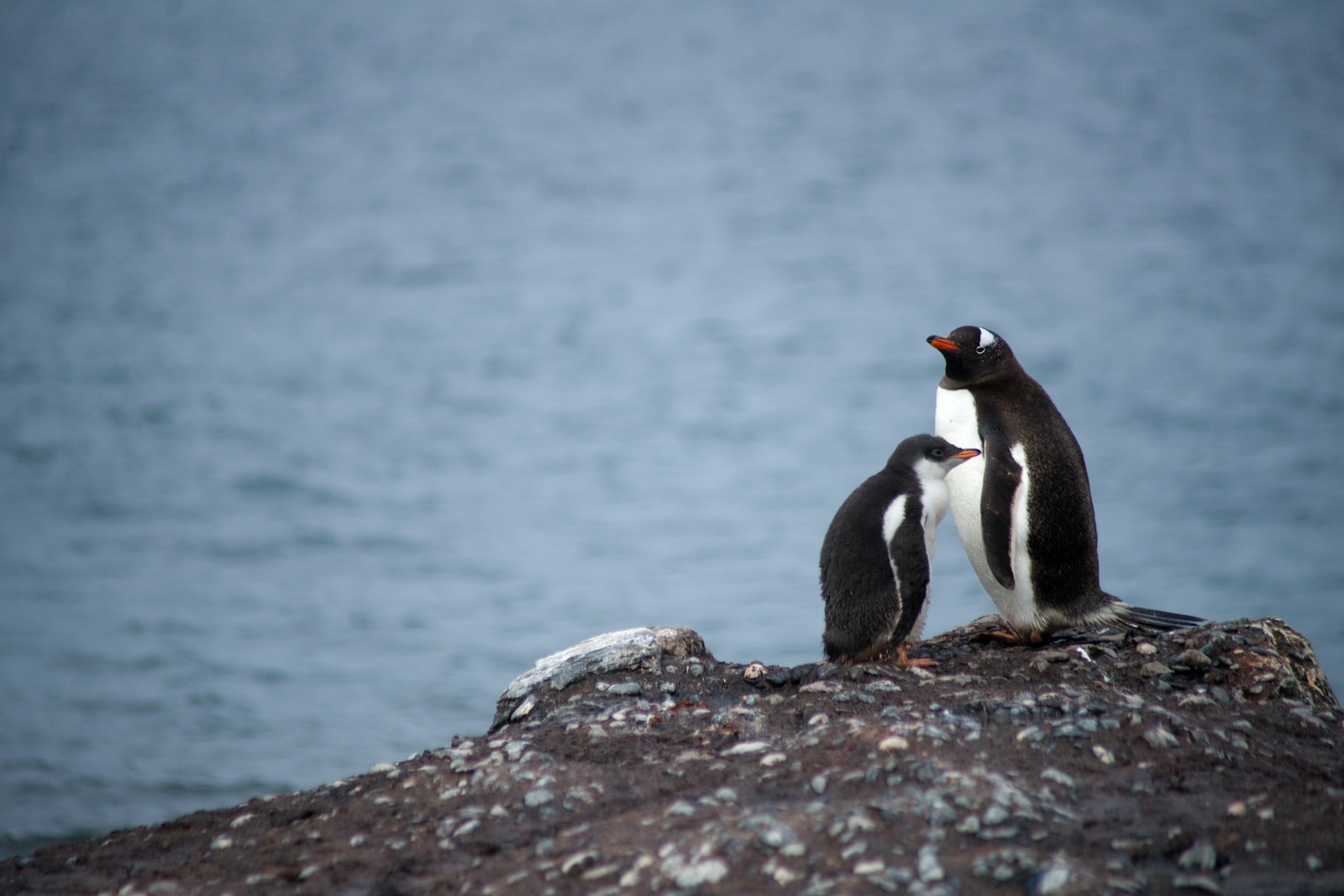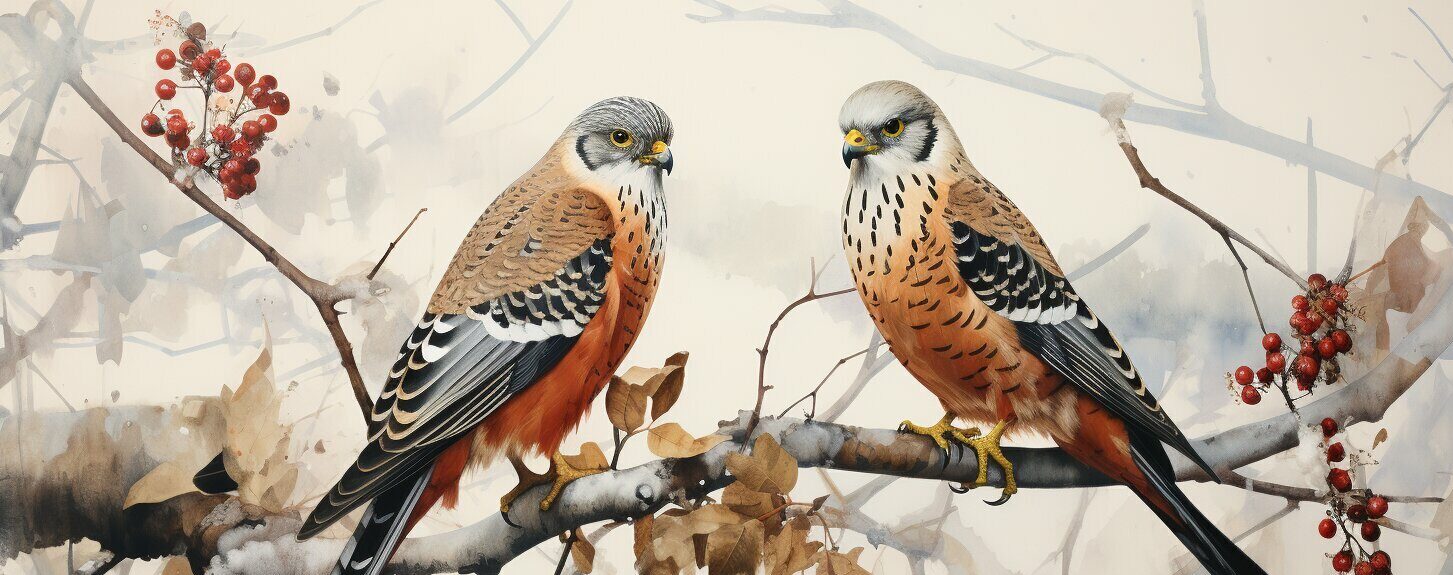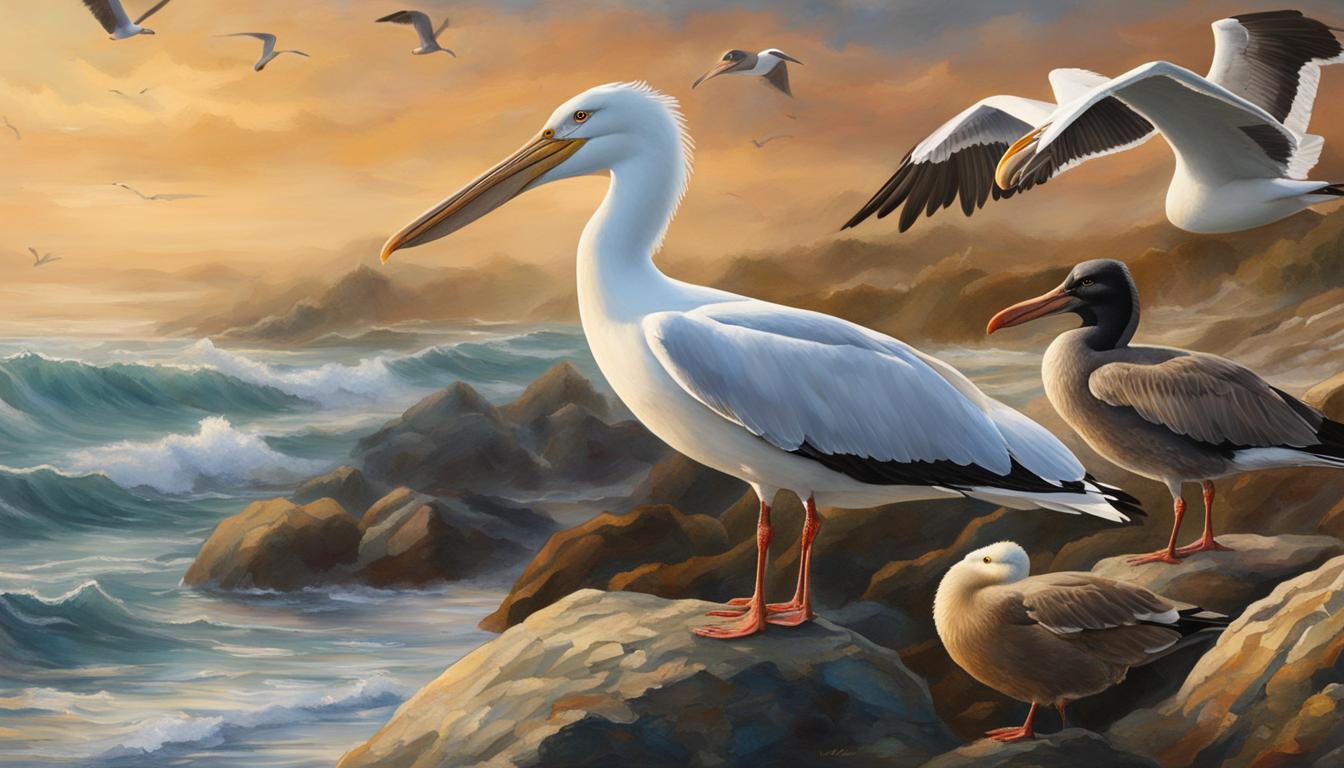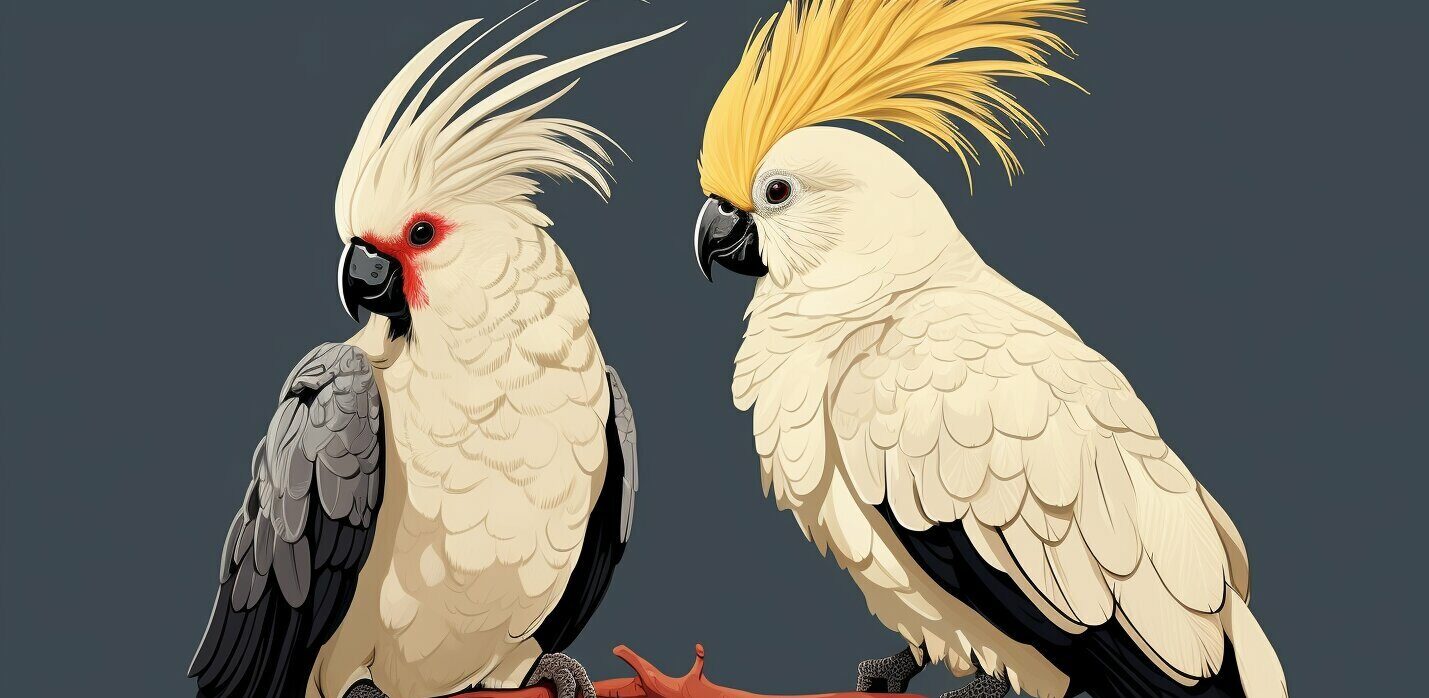Introduction: Penguins vs Puffins – The Cool Kids of the Polar Regions
Glamour in Feathers: A Brief Overview of Penguins and Puffins
Emperor penguins marching majestically against an Antarctic backdrop, or puffins posing proudly on their Arctic cliffs – indeed, the polar regions are home to some of the most photogenic avian species on Earth. Penguins, rotund and charming with their formal black-and-white attire, hail from the southern hemisphere’s icy realms.
These flightless seabirds are particularly known for their tremendous swimming prowess and remarkable adaptations to handle subzero conditions. Puffins, often dubbed as ‘sea parrots’ or ‘clowns of the sea’, reside in the northern hemisphere’s Arctic fringes.
Unlike penguins, these birds sport a more colorful palette with their distinctive rainbow-hued beaks and striking eye markings. Puffin squads have mastered both flying and swimming – showing off dexterity that’s hard to beat in tough Arctic weather.
More Than Just Adorable Waddles: Why Comparing Penguins and Puffins Matters
Comparing penguins to puffins is not just about who gets crowned as nature’s cutest creature (although we admit that would be a delightful debate). It’s an exploration into how two similar types of birds evolved distinctively while living in two different cold ecosystems.
These two bird species offer fascinating insights into adaptation strategies utilized by wildlife for survival in harsh polar environments. By examining these unique creatures up close, we can learn how each has developed specific features – from beak design to social behavior – all sculpted by the requirements of their respective habitats.
This comparison also serves as a reminder about maintaining biodiversity. As climate change fundamentally alters these bird’s icy homes, understanding their similarities and differences becomes crucial for formulating effective conservation efforts.
Home Sweet Home: Where Do They Hang Out?
Penguins’ Icy Abode: Antarctica Explained
The largely uninhabited, pristine wilderness of Antarctica is home to an array of wildlife, but perhaps none quite as endearing as the penguin. These flightless birds are quintessentially Antarctic and have adapted with aplomb to its icy landscapes.
The majority of the world’s penguin species – from regal Emperor Penguins to the smaller Adélie Penguins – have made this snow-dusted part of the globe their playground. It’s here in these sub-zero temperatures where they nest, breed and feast on a smorgasbord of seafood.
Antarctica is no walk in the park though; it’s the coldest place on Earth with temperatures plummeting below -70 degrees Celsius in winter! Yet, these hardy birds are built for such extremes.
Their dense feathers provide insulation while an underlying layer of blubber aids them in maintaining their body temperature. This icy wonderland may appear inhospitable to us but for our tuxedo-clad friends, it’s home sweet home.
Puffins’ Chilly Crib: Arctic Regions Detailed
Now let’s fly over to the northern hemisphere where we’ll find puffins enjoying life in their own frosty paradise – the Arctic region. With its cold waters and rugged coastlines, much of North America and Europe’s northernmost parts offer ideal habitats for these colorful birds (also known as ‘Sea Parrots’).
From late April through August – when not out at sea – puffins can be found nesting within bustling colonies on cliff edges or offshore islands across Iceland, Norway, Canada, Greenland… even parts of Maine! In contrast with Antarctica’s perpetual snow and ice landscape that greets penguins, the Arctic regions where puffins reside are a bit more diverse.
The terrain ranges from craggy cliffs to grassy slopes, and icy shores to barren tundra. Yet despite these differences, puffins have adapted remarkably well to their surroundings.
Their waterproof feathers keep them warm during chilly swims and their razor-sharp beaks enable them to catch small fish – a staple in their Arctic diet. The Arctic may not have quite the same chill factor as Antarctica but it’s still a frosty haven for our beloved puffins.
Look-Alikes or Not? Physical Differences Between Penguins and Puffins
Size Matters: The Great Height and Weight Debate
Let us first dive into the discussion of size. Penguins, being the divas they are, vary dramatically in stature.
The Emperor Penguin struts his stuff at a whopping 4 feet tall and can tip the scales at 90 pounds during feeding season, making it the largest of its kind. On the flip side, pun intended, we have the Little Blue Penguin who barely scrapes past 1 foot tall and weighs about as much as a pineapple.
Puffins, on the other hand, are more consistent in size across their species. They typically measure up to around 1 foot tall (just like our little blue friend!) with their weight fluctuating between 1 to 1.5 pounds – that’s equivalent to a large cup of coffee at your favorite café!
Fashionable Feathers: Decoding Their Dapper Designs
Now let’s talk about those fabulous feathers! Penguins sport a classic black-and-white ensemble – think timeless tuxedo chic!
This monochrome marvel isn’t just for show; it offers perfect camouflage while swimming. From above, their black backs blend into the depths of ocean; from below, their white bellies match with bright surface light making them invisible to predators.
Puffins prefer something a little bit more flamboyant though! Yes sirree!
They rock bold black-and-white patterns too (maybe they coordinate), but add a pop of color with large orange beaks and feet. This bright addition isn’t just for fashion forward thinking; it helps attract potential mates during breeding season.
Beak Peek: Bills Built for Banquets
Speaking of beaks – let’s take a closer peek! A penguin’s beak is long, strong, and perfectly designed for their diet.
It’s equipped with backward-facing hooks to help them grip slippery seafood – talk about a built-in cutlery set! Puffins though… now they’ve really got the goods when it comes to beaks!
Their large, triangular beaks are built like high-capacity storage units. They can carry multiple fish – up to 60 at once in some cases – back to their chicks.
Pretty impressive, eh? That fancy color of theirs fades after breeding season though, revealing a smaller, duller beak underneath – but hey, who doesn’t love a good two-in-one deal?
A Ballet on Ice and in Water: Penguins’ Waddle and Swim Style
Penguins, while infamous for their adorable waddling on land, are surprisingly agile in water. Portrayed often as the comical clowns of the avian world, their awkward terrestrial movements are actually a result of muscular legs positioned far back on their bodies – a design that is optimal for swimming rather than walking.
When they’re not busy being the Charlie Chaplins of Antarctica, they slide on their bellies – an efficient and speedy mode of travel known as ‘tobogganing’. But where penguins truly excel is in the aquatic realm.
They are veritable torpedoes underwater, reaching speeds up to 22 miles per hour! Their wings have evolved into flippers that oscillate much like propellers, enabling them to maneuver through water with remarkable agility.
Furthermore, their streamlined bodies and powerful tails add to this momentum. Let’s not forget about their dense plumage which provides buoyancy and traps a layer of air to insulate them against Antarctic temperatures.
Skyward Bound & Underwater Acrobats: Puffins’ Flight Capabilities and Swimming Prowess
Puffins might resemble penguins at first glance due to similar coloration, but one key difference clarifies any confusion: puffins can fly! Unlike penguins whose wings are evolved for swimming only, puffin wings function both as flight instruments and underwater propellers. They take off with rapid wing beats – about 400 per minute – leading many observers to liken them to ‘flying cigars’.
In addition to flying at speeds of over 50 mph, puffins also demonstrate impressive navigational skills during migration. Underwater too, puffins prove themselves quite capable.
While they may lack the sheer speed of penguins due to smaller body size (averaging around 20 cm in length), they are agile divers. These little daredevils can plunge up to 60 meters deep in pursuit of small fish, their primary diet.
Using a combination of their wings for propulsion and feet for steering, puffins can stay submerged for over a minute, making them quite the accomplished swimmers. In fact, the same qualities that make them adept fliers – powerful wings and an aerodynamically efficient body shape – also aid them in their underwater escapades.
What’s for Dinner? Diet Divergence Between Penguins & Puffins
Seafood Lovers: Penguins’ Diet Specifics
Despite their adorable waddle and seemingly clumsy maneuvers on land, penguins transform into veritable torpedoes in the water, all in pursuit of their favorite meals. Their main diet is impressively marine-based, with a rich selection of seafood on their daily menu.
Penguins are especially fond of krill, squid, and small fish which they catch during their extensive underwater hunting sessions. Each species has its own dietary preference reflecting the availability of food in their specific habitat.
For instance, Emperor Penguins around Antarctica primarily fill their bellies with fish while Adélie and Gentoo penguins show a particular partiality for krill. The distinctive hooked beak equipped with backward-facing bristles aids these birds to firmly grip onto their slippery meals.
Small Fish Aficionados: What Puffins Prefer to Munch On
On the other side of the hemisphere reside puffins, who also have a palate favoring seafood but with a slight twist. These Arctic dwellers have an affinity towards small fish like herring and sand eels rather than opting for a varied seafood platter like penguins.
During breeding season especially, puffins exhibit remarkable fishing skills by performing multiple prey loading; this means they can carry several fishes at once in their beaks owing to the unique serration along the upper mandible – something that sets them apart from other seabirds and becomes quite helpful when feeding their chicks! However, outside of breeding season when they aren’t burdened by hungry mouths to feed back at nest burrows, puffins enjoy indulging in zooplankton or large crustaceans as well.
Social Butterflies or Lone Wolves? Social Structures of Penguins & Puffins
Choreographed Chaos: The Group Dynamics Among Penguins
Penguins are well-known for their social nature. They live in large colonies called rookeries, which can consist of thousands, sometimes millions, of individuals.
This may appear as an uncontrolled chaos to the untrained eye, but the reality is strikingly different. There’s a method to the madness — each penguin has its own place and role within the community.
From keeping an eye out for predators to caring for chicks, every action contributes towards survival in harsh conditions. In addition to this practical arrangement, penguins also exhibit complex social behaviors like collective foraging and synchronized swimming.
They’ll often head out to sea as a group to feed — a strategy that reduces the risk from predators. As if these weren’t enough examples of their sociability, one could marvel at their vocal communication system which involves specific calls used to identify mates or offspring among the densely packed crowd.
Cliffside Conclaves: How Puffins Like To Socialize
Puffins are not serial loners either; they prefer company and often live in sprawling colonies on cliff tops or islands during breeding season. These communities known as ‘circuses’ are more than just nesting grounds; they provide opportunities for puffins to engage in lively social interactions. Much like their Antarctic counterparts, puffins also have unique communication methods – primarily using body language rather than vocalizations.
A puffin may perform a ‘billing’ display where two birds rub their beaks together — this ritual not only strengthens pair bonds but serves as a crowd-pleaser attracting attention from other puffins. Outside breeding season though, puffins lead rather solitary lives at sea.
Unlike penguins who maintain their community ties year-round, puffins keep to themselves, floating alone on ocean waves. This stark difference in social structure between the two birds again highlights their adaptability to their respective polar habitats.
Love is in the Air (or Water): Mating Rituals & Offspring Rearing
Ritualized Promenading & Pebble Presents: An Ode to Penguin Love Stories
Talk about love languages! Penguins are akin to Arthur Murray when it comes to courtship.
These birds engage in complex mating rituals that could be straight out of a classic romance novel, complete with choreography that would put Fred Astaire and Ginger Rogers to shame. Each species has its own unique dance moves, generally involving an elaborate display of head-bobbing, flipper-waving, and deep bowing.
In some cases, male penguins also serenade their prospective partners with vocalizations called “ecstatic displays.” The most endearing part? The stone gift-giving!
Male Adélie and Gentoo penguins are known for offering pebbles — the penguin equivalent of a precious diamond ring — as gifts to woo their mates. After all, nothing says romance quite like a shiny rock if you’re a penguin!
Clifftop Homemaking & Solo Chick Care: Profiling Puffin Parenting Style
Now let’s set our sights on the parenting style of puffins! These monogamous Arctic dwellers don’t just mate for life; they go further by creating literal love nests on cliff edges and rocky outcrops.
Their nesting preferences make for gripping drama – imagine building your home at the edge of precipitous cliffs while incessantly battling harsh winds! Unlike their relatives who lay multiple eggs during breeding season, puffins operate on a one-egg policy.
Both parents share incubation duties over their single egg in turns – talk about equality! Once hatched, puffin chicks (adorably known as pufflings) are cared for with great dedication by both parents who take turns bringing food back to the nest.
The puffin family stays together until the puffling is ready to fly and face the world on its own. What a display of puffin parental perseverance!
Threat Level Midnight: Predators & Threats Faced by Both Birds
Ice-Cold Hunters: Predators that Fancy Penguins
Penguins may seem like charming, waddling comedians to us, but to some predators, they appear as lunch on ice. While penguins are formidable swimmers and can escape many threats in the water with their agile moves, they aren’t invincible. In the Southern Ocean’s frosty waters, leopard seals and orcas are the top predators who wouldn’t hesitate to enjoy a penguin course.
These marine mammals have developed hunting strategies sophisticated enough to outsmart even the slipperiest of penguins. On land, things don’t get any easier for these monochrome birds.
Skua birds often swoop down on unsuspecting penguin colonies, targeting their eggs and young chicks. In areas located closer to human habitation, introduced species like cats and dogs pose significant threats as well.
Arctic Adversaries: Who’s After the Puffin Population?
Puffins may not have as many aquatic enemies due to their smaller size and superior flight skills – however that doesn’t mean it’s all clear skies for them! Nesting on cliffsides might feel safe – until you consider Arctic foxes with a knack for scaling heights when there’s potential food involved. These foxes can swiftly snatch puffin chicks from their cliff-hanging nests when given an opportunity.
In air, puffins must maintain vigilance against larger birds such as gulls and eagles who view them as a feathery snack option. Overfishing by humans is another rather indirect yet serious threat which affects the puffin population by depleting their food sources – primarily small fish.
…
The world of both puffins and penguins – while filled with icy adventures and adorable waddles – is fraught with threats. But let’s remember, these resilient birds have adapted to survive in some of the harshest conditions on earth.
So, while they may face challenges, they’re equipped with the strength and instinct to overcome them. Let’s respect their habitats and give these incredible avian species a fighting chance to not just survive, but thrive in their icy homes.
 Skip to main content
Skip to main content


